CFOP 2-Look Method
The site is built to make it easier to practice (i.e. replay) the specific moves per case whilst learning CFOP algorithms. All examples and notes are based on the excellent Beginner CFOP tutorials from 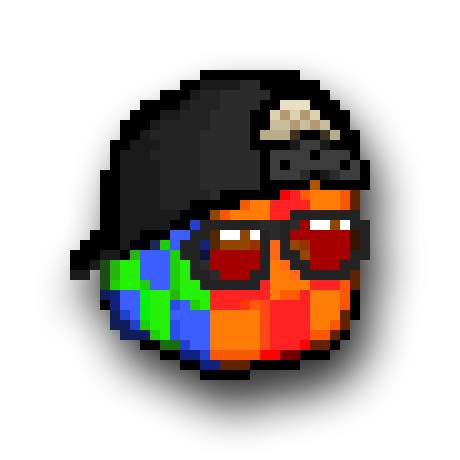 CubeHead.
CubeHead.
I'll focus on the F2L, OLL and PLL stages, and will skip the CROSS stage but see the videos from CubeHead. Just to be clear, I'm not a cubing expert, far from it, this is a cheat sheet for my own learning, and if others find it useful, then that is good to hear. For most cases below, you can click on the cube image to see a demonstration of the algorithm.
F2L intuitive cases
See Intuitive F2L YouTube video from CubeHead.
The goal of F2L (first two layers) is to efficiently solve the first two layers, slotting edge-corner pairs at the same time. Like with the cross stage, "intuitive" f2l uses a combination of a few repeated patterns, and setting up cases to allow you to slot an edge-corner pair into the position.
Whilst there are over 40 case that can occur (each with their own algorithm), there are 4 easy cases when edges-corner pairs are in the top layer, and you can use a few tricks to setup all other cases ready for an easy insert, rather than having to learn all the different algorithms.
CubeHead explains this really well, way better than I ever could, so watch his video! The gist of F2L breaks down as: 1. find a pair, 2. setup easy inserts (i.e. pair disconnected in the top layer), 3. solve pair in target slot whilst not impacting previously solved cases. You'll gradually learn the logic through practicing solves.
Step 1 :: Easy Inserts
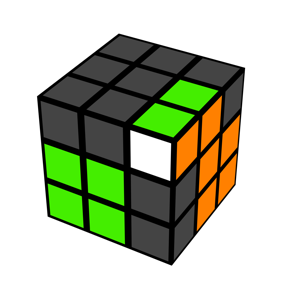
U R U' R'
Side colours match to right. Push pair aside, open slot, insert pair, close slot.

U' L' U L
Side colours match to left. Push pair aside, open slot, insert pair, close slot.
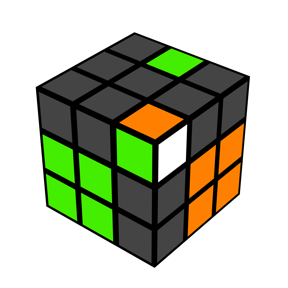
R U R'
Different colours facing up, white to right. Create pair, insert pair, realign cross.

L' U' L
Different colours facing up, white to left. Create pair, insert pair, realign cross
Step 2 :: Setup inserts for stuck or connected pairs

R U R' ...
Hold edge on right, put the corner front left and use trigger to bring pair into top layer and disconnected. Then setup, or use an insert to solve.
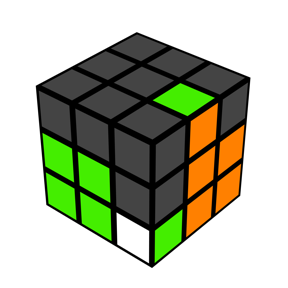
R U R' ...
Hold edge on left, put the corner front right and use trigger to bring pair into top layer and disconnected. Then setup, or use an insert to solve.
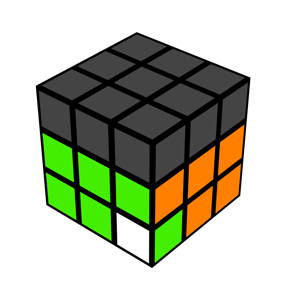
R U' R' ...
Hold pair on right, use trigger but with a U' to bring pair into top layer and disconnected. Then setup, or use an insert to solve.

R U2 R' ...
Hold corner on right, use trigger but with a U2 rotation. Then setup, or use an insert to solve.
Step 3 :: Solve pairs in target slot
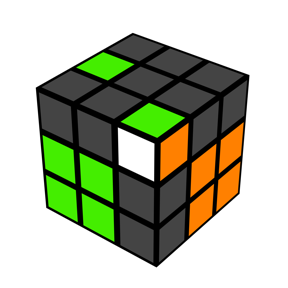
Hold white face to the side, if colours match, move the edge next to the corner to setup an insert pair case.
- turn upper layer so corner is over target slot
- turn upper layer again, to move corner away 1-turn and still see white
- turn target slot up, putting corner to safety
- turn upper layer, putting edge where needs to be for pair (next to)
- realign the cross, which brings corner back up
- solve with a lefty or righty pair, depending on which side matches

Hold white face to the side, if colours match, move the edge across from the corner, to setup an insert pair case.
- turn upper layer so corner is over target slot
- turn upper layer again, to move corner away 1-turn and still see white
- turn target slot up, putting corner to safety
- turn upper layer, putting edge where needs to be for pair (across from)
- realign the cross, bring corner back up
- solve with a lefty or righty insert, depending on which side matches
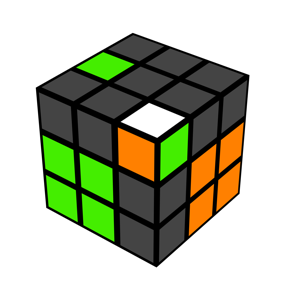
If white face up ...
- turn edge to align with matching center of side face
- turn slot up, putting edge to safety
- turn upper layer, putting corner above edge
- realign the cross
- solve pair with a lefty or righty insert
OLL 2-Look Cases
See 2-look OLL YouTube video from CubeHead.
The goal of OLL (orientation of last layer) is to solve the yellow face after finishing F2L. We can no longer use "intuitive" techniques, rather we need to use algorithms that solve specific patterns.
Whilst there are 57 cases in total, we only need 9 algorithms for 2-look OLL. Most algorithms begin by taking one pair out (often front-right or front-left), doing something with it and then putting it back. To memorize the entire algorithm more easily, try following what is happening to that pair.
Step 1 :: Edge Orientation (Yellow Cross)
F (R U R' U') F'
Hold cube so line is orientated horizontal. Algorithm uses front rotations + sexy trigger.
f (R U R' U') f'
Hold cube so hook is orientated front/right. Algorithm uses wide-front rotations + sexy trigger.
F (R U R' U') F'
f (R U R' U') f'
Hold cube any orientation. Use combination of front + wide-front rotations + sexy trigger.
Step 2 :: Corner Orientation
(R U R’ U) (R U2 R’)
Hold cube so fish mouth front left, with a yellow in the front right.
(R U2 R') (U' R U' R')
Hold cube so fish mouth back right, with a yellow in the front left.
(R U R' U) (R U' R' U)
(R U2 R')
Hold cube so headlights face away to the sides.
R U2 (R2 U') (R2 U')
R2 U2 R
Hold cube so headlights on the left and side lights on the right.
(r U R' U') (r' F R) F'
Hold cube so block is on the right, with outward facing stickers on the left. Uses wide-right rotations.
F' (r U R' U') (r' F R)
Hold cube so have two yellow corners so side, one front right, one left back. Uses wide-right rotations.
R2 D (R' U2 R)
D' (R' U2 R')
Hold cube so yellow block at the back with headlights at the front.
PLL 2-Look Cases
See 2-look PLL YouTube video from CubeHead.
The goal of PLL (permutation of the last layer) is to finish the cube solve by moving pieces around after OLL. You do this by recognizing patterns on the side of the last layer, and use an algorithm that solves that case.
Whilst there 21 cases in total, we only need 6 algorithms for 2-look PLL. The first step is to solve the corners (headlights on all sides), then the second step is to solve the edges.
Step 1 :: Corner Permutation
F R U' R' U' R U R' F'
(R U R' U') (R' F R F')
If no headlights on any side, need to swap diagonal corners, it does not matter how orientate the cube. Use algorithm to swap opposite corners.
(R U R' U') R' F
R2 U' R' U' R U R' F'
If any headlights, hold cube so they are on the left side. Use algorithm to swap adjacent corners.
Step 2 :: Edge Permutation
(R2 U' R') U' R
(U R) (U R) U' R
Hold cube so the bar is at the front, edge on left is opposite its corners.
R' U (R' U') (R' U')
R' U (R U R2)
Hold cube so the bar is at the front, edge on right is opposite its corners.
M2 U' (M2 U2 M2)
U' M2
There is a checkerboard pattern, each edge is opposite of the corners. This algorithm uses middle layer moves, it does not matter how orientate the cube.
M' U' (M2 U')
(M2 U') M' U2 M2
There is a checkerboard pattern, but this time edges are adjacent the corners. Orientate the top layer or cube so that the edges that need to swap are in the front and right slots.
Starting with 3-Look OLL + PLL
There is a minimal subset of 4 algorithms (sune/anti-sune, t-perm, ua-perm) we can use to solve the last layer but depending on the cases you get, require repetitions. Whilst this reduces the number of CFOP algorithms to learn, it increases the time to solve the last layer with some unpredictability. You should be using intuitive CROSS and F2L techniques for the first two layers, and when you are comfortable with these algorithms, start learning the rest of the 2-look algorithms. Alternatively, use the Sune + Niklas + Righty algorithms to solve the last layer as learnt in the beginner method, but better to try to learn these CFOP cases and progress your journey to cubing like a pro!! 😀 😱
(R U R') U (R U2 R')
(R U2 R') U' (R U' R')
(R U R') U (R U2 R')
(R U R') U (R U2 R')
(R U R' U') R' F
(R2 U' R') U' (R U R') F'
(R2 U' R')
U' R (U R) (U R) U' R